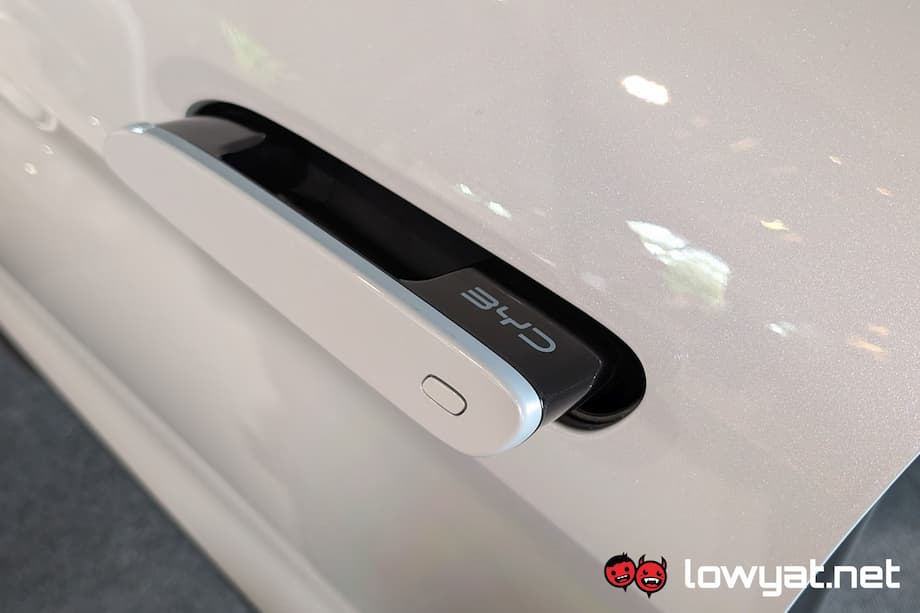Why regulators are targeting hidden door handles
Flush, retractable door handles have become a signature detail on many new cars, especially electric models. They sit nearly flat against the bodywork for a clean look and are often promoted as aerodynamic upgrades. Chinese regulators now plan to prohibit fully retractable versions after a short transition, citing repeated failures in real crashes, problems during power loss, and a rise in injuries. The proposed national standard, expected to be finalized soon, would take effect after a one year transition and begin enforcement in July 2027 for new vehicles sold in China.
- Why regulators are targeting hidden door handles
- What will be banned and what will remain allowed
- Do hidden handles really save energy
- Safety records and lessons from recent crashes
- How and when the rule would take effect
- Which carmakers are affected and how they may respond
- Global ripple effects and alignment with other safety moves
- What drivers and buyers should expect
- Key Points
Safety data has driven the move. In side impact crash tests by the China Insurance Automotive Safety Index, doors with electric or motorized handle systems achieved a door pop out success rate of about 67 percent, compared with 98 percent for traditional mechanical handles. Separate nationwide investigations recorded a 47 percent rise in accidents linked to door handle failures during 2024, with hidden or fully retractable systems accounting for around 82 percent of those cases. Consumer groups also noted a sharp increase in finger pinch incidents associated with automated handles, up 132 percent year over year, including bone fractures in some cases.
Hidden handles can fail in several ways. If a vehicle loses electrical power during or after a collision, an electronic handle may not present, slowing escape or rescue. In cold snaps, handle motors have frozen. During heavy rain, short circuits have been reported. First responders can be delayed by unfamiliar electronic releases or flush surfaces that offer no mechanical leverage. Each of these failure modes reduces the margin for survival in serious crashes when seconds matter.
The draft standard under discussion would prohibit fully retractable handles yet still allow traditional handles and semi retractable designs. Crucially, any permitted handle must include a mechanical redundancy, a direct mechanical linkage or emergency release that works even if power and networks are down. Regulators are also reviewing rules for automatic unlock behavior in emergencies to make sure doors can be opened quickly by occupants and rescuers.
What will be banned and what will remain allowed
Fully retractable handles are those that sit flush with the body and present outward only when triggered, usually by an electric motor or electronic touch sensor. After enforcement begins, new vehicles sold in China would not be allowed to use that approach.
What stays legal under the proposal
Conventional protruding handles would remain acceptable. So would semi retractable designs that provide a tangible grip and a clear point to pull, as long as they have a robust mechanical backup. Mechanical redundancy means the handle can still actuate the latch by a direct physical connection, or via a clearly marked emergency pull, if the car loses power. Some models on sale today already combine a sleek exterior with a real mechanical release inside the door, proving that modern styling and fail safe operation can coexist.
It also helps to separate two pieces of hardware that are often conflated: the exterior handle and the door latch. Many failures blamed on flush handles actually involve electric latches that replaced simple linkages with buttons or software logic. The new rules focus on the entire path to egress, so occupants and first responders can open a door rapidly even when electronics misbehave.
Do hidden handles really save energy
Automakers often tout flush handles as an aerodynamic win. In theory, removing protrusions reduces a car’s drag coefficient (Cd). Independent assessments suggest the real world drag improvement from flush handles is small, often around 0.005 Cd, sometimes cited up to 0.01. That translates to a very modest energy saving, roughly about 0.6 kWh per 100 km in typical driving. On an electric car with a 60 to 80 kWh battery, the difference is barely noticeable for most owners.
Meanwhile, the motors, sensors, and mechanisms add mass, sometimes around 8 kg or more when considering reinforcements and wiring. Added weight offsets a portion of any aerodynamic gain. These systems also cost more and fail more often, with industry data indicating that electronic handle setups can cost around three times as much as mechanical handles and fail up to eight times as frequently. One major EV brand has reported that broken door handles account for roughly 12 percent of its repair cases. The tradeoff, small efficiency gains against higher cost and lower reliability, has increasingly been viewed as poor value.
Safety records and lessons from recent crashes
The most troubling findings arise during side impacts, where structure intrusion and electrical damage are common. The China Insurance Automotive Safety Index measured a 67 percent door opening success rate for vehicles with electronic handles in side impact testing, far below the 98 percent rate seen with purely mechanical handles. In a chaotic rescue scenario, that gap can become the difference between a quick exit and a dangerous delay.
Real world incidents track with those results. Cold weather has frozen handle motors, preventing them from presenting. Heavy rain has caused short circuits that lock out exterior access. First responders have described difficulties locating and operating concealed releases, especially at night or when a cabin is filled with smoke. High profile crashes have involved vehicles where flush or electronic handles did not present as expected, which slowed extraction. The pattern has focused regulators on a simple principle: emergency egress must be intuitive, mechanical, and available to every occupant without special knowledge.
Risks are not limited to crashes. Automatic handles that extend and retract can pinch small hands if a child reaches toward the mechanism at the wrong moment. Consumer groups in China reported a 132 percent rise in finger pinch complaints connected to hidden or automated handles last year, with some injuries severe enough to break bones. Designers must balance sleek looks with predictable, controlled motion and clear visual cues about where it is safe to pull.
How and when the rule would take effect
Regulators plan to publish a mandatory standard that bans fully retractable handles and requires mechanical redundancy for any permitted design. The roadmap under discussion calls for a draft to be finalized soon, followed by a one year transition period. Enforcement would begin in July 2027. From that point, new vehicles sold in China could not ship with fully retractable flush handles. The standard would apply at type approval and production, so automakers would need to certify compliant hardware and update documentation and rescue guides.
Existing vehicles would not be recalled solely for having flush handles unless a separate safety campaign is issued. It is not yet confirmed whether the same rules will be required for vehicles built in China for export. Many manufacturers prefer to unify design solutions across markets, so a change in China often spills over into global lineups to simplify engineering and supply chains.
Which carmakers are affected and how they may respond
Flush or hidden handles appear on a long list of current models, including popular electric cars and luxury vehicles. Several Chinese brands, such as Zeekr, XPeng, Leapmotor, and Deepal, adopted the look early. International brands like Tesla, Land Rover, and some Mercedes models brought it to mainstream attention. A shift back to visible handles, or to semi retractable versions with obvious grips and a firm mechanical linkage, would require new tooling, supplier contracts, and crash validation.
Some companies already offer alternatives that satisfy the intent of the new rule. Volkswagen, for example, has used semi retractable designs that expose a real pull point and pair it with a mechanical backup. FAW Audi has implemented emergency pull cords and labeled releases. Executives at major automakers in China have publicly criticized hidden handles for being heavy, leaky, noisy, and power dependent. The next few design cycles are likely to converge around solutions that prioritize a clear pull, positive mechanical feedback, and simple emergency releases that every occupant can find fast.
Suppliers that built businesses around motorized handle modules may pivot to lower cost, low failure assemblies that retain a modern appearance without relying on motors for basic operation. Carmakers will also revisit the related issue of electronic latches, making sure each door includes a direct, well marked escape path if the primary button fails.
Global ripple effects and alignment with other safety moves
China’s market size means a regulatory shift there influences design everywhere. Safety organizations in other regions are already pushing in a similar direction. From 2026, Euro NCAP’s test protocols will withhold top ratings from vehicles that bury essential controls inside touchscreens. Australia’s ANCAP evaluates power operated latches and requires that occupants can escape in a set time using a secondary system if electronics fail. In the United States, calls for clearer egress standards have grown as electronic handles and latches spread from luxury segments to mass market models.
Criticism is also building against other tech fads that complicate simple tasks. Replacing physical buttons with touch menus for wipers, hazard lights, or turn indicators has drawn safety scrutiny. Digital side mirrors have been questioned for poor visibility in rain or glare. The new handle rule fits a larger pattern: regulators are drawing a line where design fashion or software complexity undermines basic safety functions that drivers and rescuers must perform under stress.
What drivers and buyers should expect
Shoppers can expect more cars with simple, tactile handles that work the same way every time. That likely means lower repair costs and fewer service visits for handle failures. It also means faster access for firefighters and paramedics, clearer instructions for occupants, and fewer pinch injuries. The change should not detract from modern styling. Many recent designs show that clean lines and visible handles can go together when the pull point is integrated thoughtfully into the door skin.
Owners of vehicles with flush retractable handles are not automatically affected. It remains wise to learn the location of any emergency door releases and to show family members how to operate them. Keeping a vehicle’s software current and inspecting seals around handle mechanisms can reduce water ingress issues. If the proposed standard is finalized, expect new model launches to highlight mechanical backups and emergency egress instructions more prominently in owner materials and showroom training.
Key Points
- China plans to prohibit fully retractable flush door handles on new vehicles, with enforcement targeted for July 2027 after a one year transition.
- Traditional and semi retractable handles would remain allowed, but must include a clear mechanical backup that works without power.
- Crash tests show electronic handles open doors in side impacts about 67 percent of the time, compared with 98 percent for mechanical designs.
- China’s national investigations recorded a 47 percent rise in accidents tied to handle failures in 2024, with hidden handles involved in about 82 percent of cases.
- Consumer complaints over finger pinches from automated handles jumped 132 percent year over year, including cases with broken bones.
- Energy gains from flush handles are small, often around a 0.005 Cd reduction, while added weight, higher cost, and higher failure rates erode any benefit.
- Several automakers are already shifting to semi retractable or conventional handles with mechanical redundancy and clearly labeled emergency releases.
- The move aligns with wider safety trends, including Euro NCAP’s 2026 stance against hiding essential controls in touchscreens and ANCAP’s egress requirements.
- Global designs may change, since manufacturers often standardize hardware across markets to meet China’s rules and reduce complexity.
- Drivers can expect simpler handles, easier emergency access, and fewer failures, without sacrificing modern styling.




